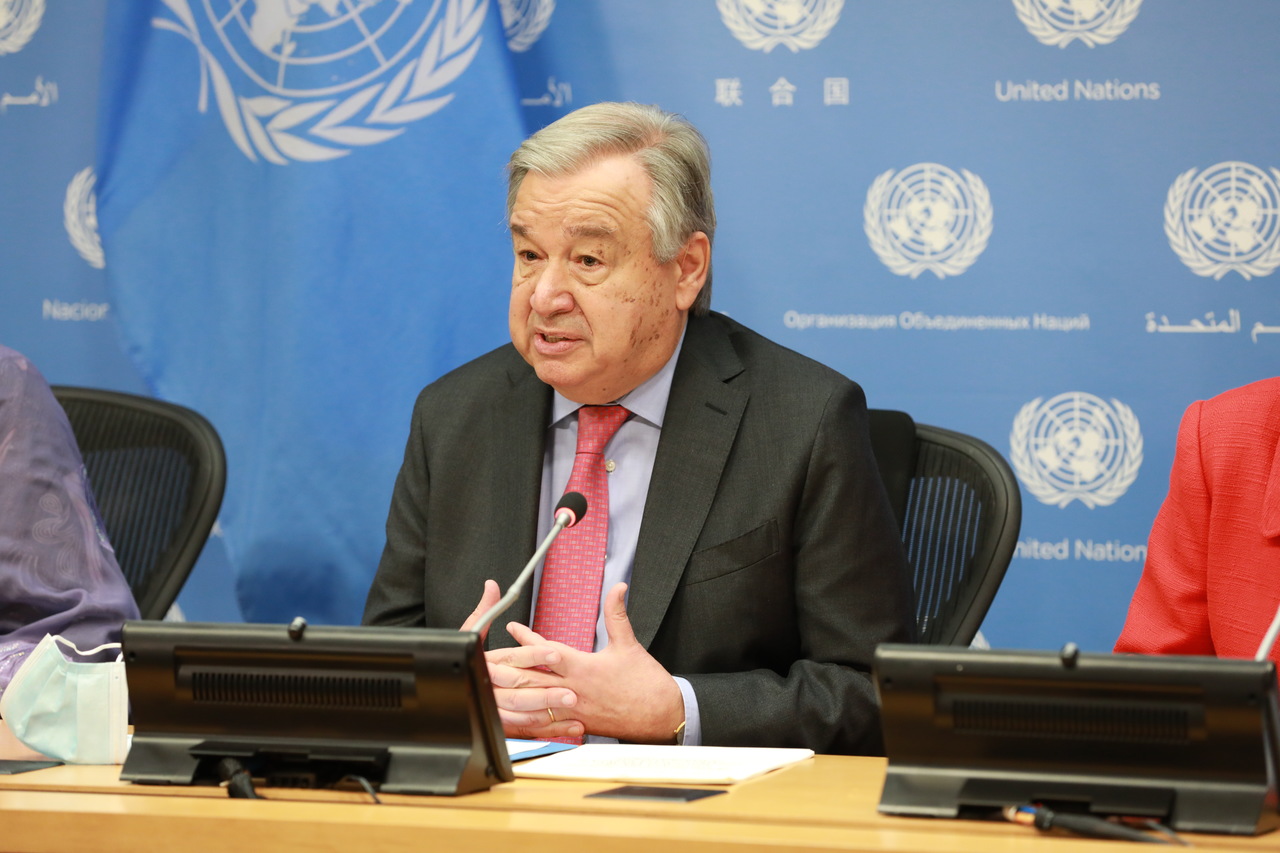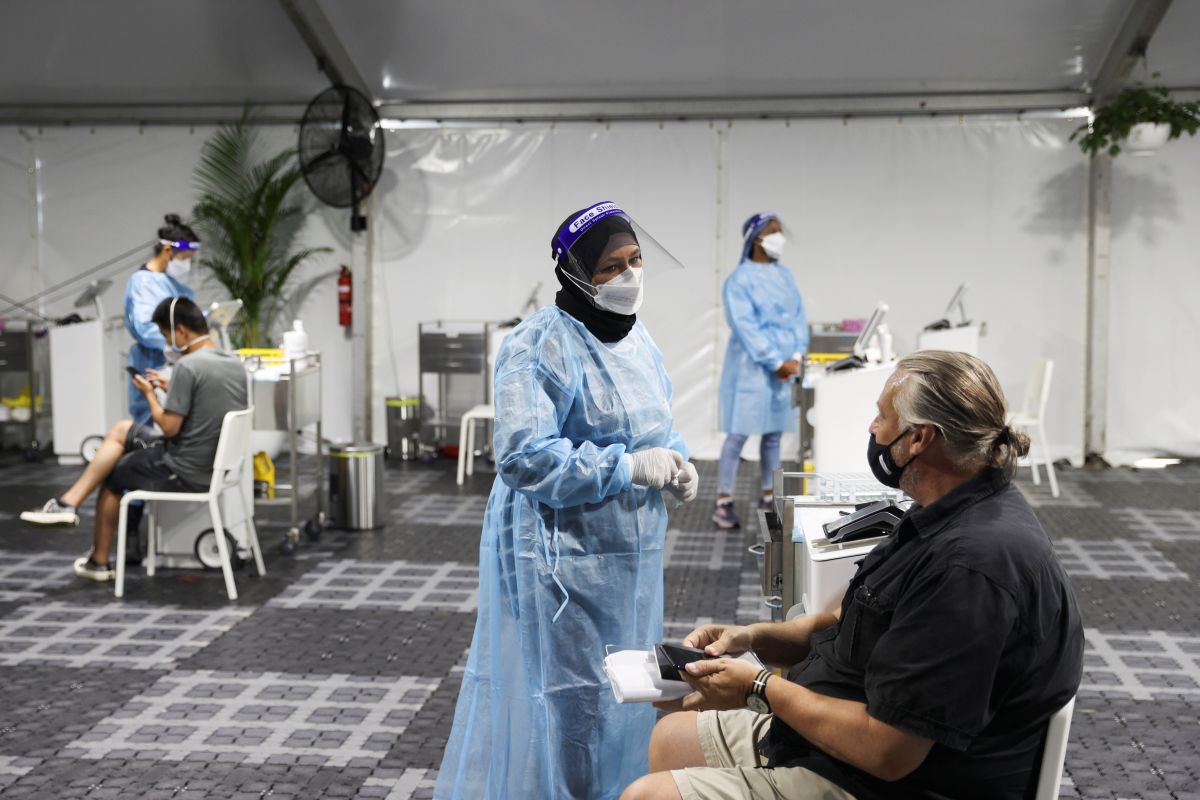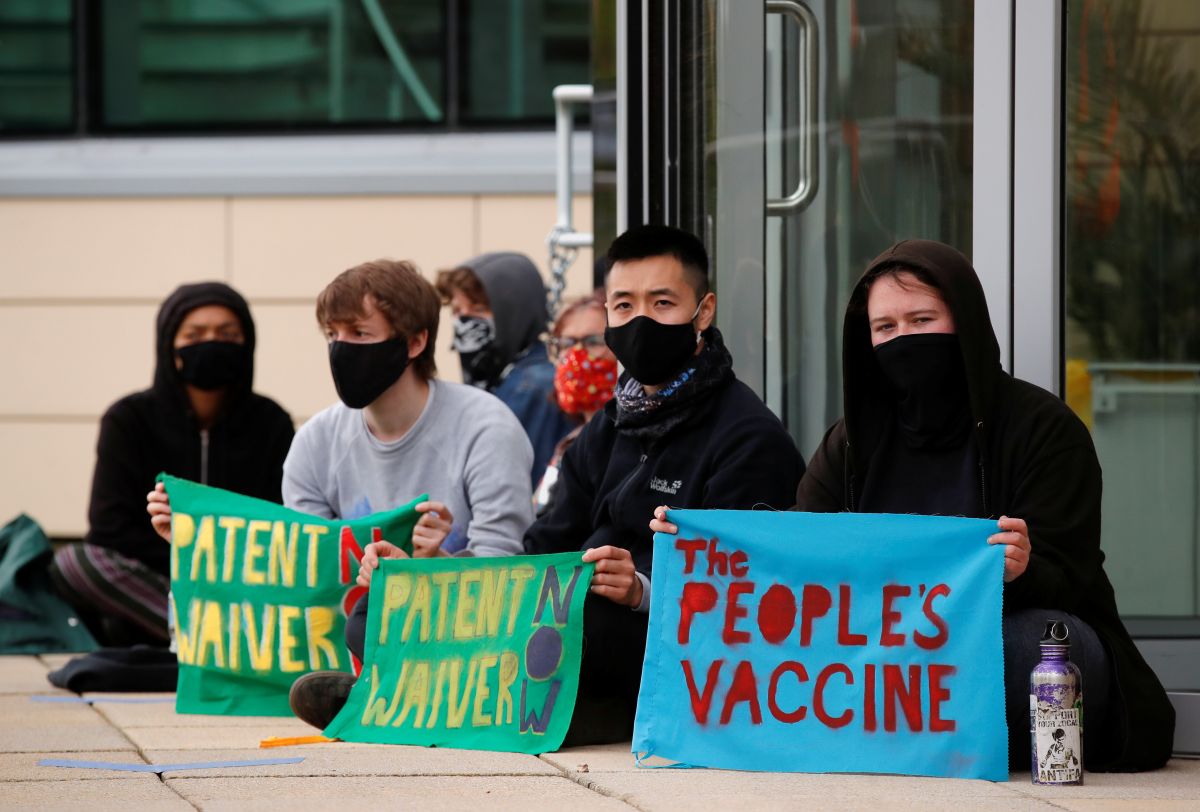The Impact of the War in Ukraine on the Food Security of Developing Countries
The Russian aggression against Ukraine is yet another economic challenge for developing countries after the COVID-19 pandemic and threatens their food security. The expected lower production and limits on export of grains from Ukraine and Russia, as well as rising costs of energy resources and fertilisers have led to an increase in global food prices. To counter this crisis, the EU and the U.S. may seek to increase the worldwide supply of cereals, including by activating strategic reserves, refraining from export restrictions, strengthening financing for organisations preventing hunger, and facilitating trade in fertilisers.
 Xie E/ Xinhua News Agency/ FORUM
Xie E/ Xinhua News Agency/ FORUM
UN Secretary-General António Guterres warned on 14 March that the protracted war in Ukraine would have negative effects on the global economy, including rising food prices and a “hurricane of hunger” that would particularly hit people in the poorest countries. In turn, the head of the WTO, Ngozi Okonjo-Iweala, indicated on 24 March that this could lead to “food riots” in poor countries and warned food-producing countries against hoarding supplies. On the other hand, the president of the European Commission, Ursula von der Leyen, stated on 22 March that the war caused by Russia “threatens the food security of the whole world”. This risk is increased by the fact that the new crisis compounds the situation created by the COVID-19 pandemic, which has already hit the economies of developing countries hard and pushed more than 100 million people back into poverty. Limiting the negative effects of these combined crises on the global food market will depend on three factors: the duration of the war in Ukraine, the maintenance of supplies to the developing world from Russia, and the reaction of other food producers, primarily OECD countries.
The Importance of Ukraine and Russia on the Global Food Market
Ukraine and Russia are among the major producers of agricultural products in the world. According to UNCTAD, in 2020, 36% of exports of sunflower oil and seeds, 13% of the corn, 11% of rye, 10% of colza and 9% of wheat came from Ukraine. The corresponding figures for Russia were 17%, 1%, 12%, 6%, and 18%. The exports of these products from Ukraine and Russia are concentrated on developing countries in Africa and the Middle East. While Ukraine and Russia account for 27% of world wheat supplies, in 2018-2020 they provided 44% of imports of the grain to Africa (Russia 32%, Ukraine 12%), and some countries are extremely dependent on these sources (Somalia and Benin 100%, Egypt 82%). The largest purchasers of wheat from Ukraine in 2019 were Egypt ($685 million), Indonesia ($603 million), and the Philippines ($242 million). At the same time, Russia is a more important supplier of basic agricultural products for most countries (except China, India, Indonesia, and Tunisia). It is also the world’s largest producer and exporter of chemical fertilisers. Reducing their availability in developing countries would cause a decline in agricultural production in the months or maybe years to come.
Before the outbreak of the war in Ukraine, the UN Food and Agriculture Organisation (FAO) forecasted that for the 2021/22 season the world would produce more cereals (by 0.7%, to 2.796 billion tonnes) and see more trade in them (by 0.9%) than a year earlier (up to 484 million tonnes). There were also more accumulated stocks of cereals (836 million tonnes), including wheat (291 million tonnes) than in the previous year. In 2022, wheat production was expected to increase from 775 million tonnes to 790 million tonnes (mainly due to a good harvest in North America) and exports would reach 194 million tonnes. Until July this year Ukraine was to export, inter alia, 6 million tonnes of wheat and 16 million tonnes of corn, while Russia was on track for 8 million tonnes and 2.5 million tonnes, respectively. This would mean that even total exclusion of wheat exports from Ukraine (3% of global supply) wouldn’t have a devastating effect on world trade in this grain this season.
Yet, despite the good forecasts, the prices of food products rose even before the war. The FAO food price index rose in February by 3.9% compared to January and by 20.7% year on year (y/y), reaching the highest level in history. Rising prices of vegetable oils (36% y/y), dairy products (25% y/y) and cereals (15% y/y) played a major role. The war will strengthen this trend even more, especially with regard to the prices of sunflower oil, of which Ukraine was the largest exporter. In March, taking into account the effects of the war, the FAO price index increased by 12.6% monthly, mainly due to rising prices of cereals (17.1%), including wheat (19.7%), maize (19.1%), and edible oils (23.4%).
Consequences of the war in Ukraine
The fighting is affecting food security in three main ways. First, it has had a direct effect through increased prices of certain products as supplies are limited. The Russian blockade of ports in the Black Sea prevents the export of Ukrainian products through this primary sea route. Additionally, the Ukrainian authorities first introduced export licenses (6 March) and then banned the sale of food products abroad (9 and 15 March). Russia may also face difficulties in exporting products due to the military operations and the sanctions imposed on it (e.g., difficulties in carrying out financial transactions or servicing Russian ships). It may also deliberately limit the export of products in order to increase their prices and gain political influence over foreign partners.
Second, the war indirectly affects the agri-food market due to the increase in the prices of energy resources. Rising oil and gas prices result in higher production and transportation costs, which will translate into higher food prices. In addition, higher gas prices mean an increase in the prices of chemical fertilisers used in the production of this raw material. Moreover, Russia has restricted fertiliser exports to put pressure on importing countries.
Third, the war limits the possibilities for international humanitarian aid, increasing its costs. The stoppage of supplies from Ukraine has already caused problems for some aid agencies. The World Food Programme (WFP) imported more than 50% of its wheat from Ukraine destined for such countries as Ethiopia, Yemen, and Syria. Financing has also been affected: by 1 April, only 5.2% of the $42.2 billion in appeals by humanitarian organisations to function this year had been met. The global increases in food prices will make these funding appeals soar (e.g., for WFP by $29 million per month), further increasing the risk of starvation and malnutrition in high-risk regions of the world. For example, the EU announced in March that it would allocate €2.5 billion until 2024 to increase food security in the world.
Prospects and Recommendations
The war in Ukraine is disrupting supply chains and increasing the price of food in the world. In the short term, it should not pose a threat to world food security, although it puts some countries in a difficult situation, especially developing states that have so far imported key products from Ukraine. The reduction in imports from this one country can be met by increasing supplies from the reserves of other countries. The situation will become more critical if Russia stops exporting food or sanctions make it impossible to buy it from this country. The biggest problems, however, will come from a protracted war in Ukraine. It would make sowing the next crop more difficult and reduce the next harvest, which could keep prices high. The Ukrainian Ministry of Agriculture estimates that only 80% of the existing arable land is useable this spring. If the war escalates, this acreage will be further reduced.
The main challenge for developing countries is the dramatic rise in food prices. This may lead to a deterioration of their economic situation (including an increase in inflation and debt) and an increase in the number of people living in poverty, malnourished, or dying of hunger. The effect of this will be the destabilisation of states (as seen in the protests in Lebanon, Peru, and Sri Lanka) and migration pressure. Ensuring the functioning of humanitarian aid is also becoming a challenge.
OECD members, including EU countries and the U.S., should take measures to reduce the risk of food security disturbances and rapid increases in prices of agri-food products in the world. To this end, they should refrain from imposing restrictions on their own exports. In the short term, they should release their strategic reserves to stabilise world prices and ensure supplies to countries most dependent on food imports. In the longer term, it is worth considering increasing yields of key crops to make up for any losses from Ukraine or Russia, as well as supporting the reconstruction of agriculture in Ukraine. The EU and the U.S. should also increase humanitarian funding to cover the growing needs of international organisations and support economically the poorest countries. It may even be necessary to facilitate (by limiting sanctions) the export of food and fertilisers from Russia. Western countries trying to isolate Russia internationally should not create the impression that they want to achieve their political goals at the expense of the inhabitants of developing countries.




